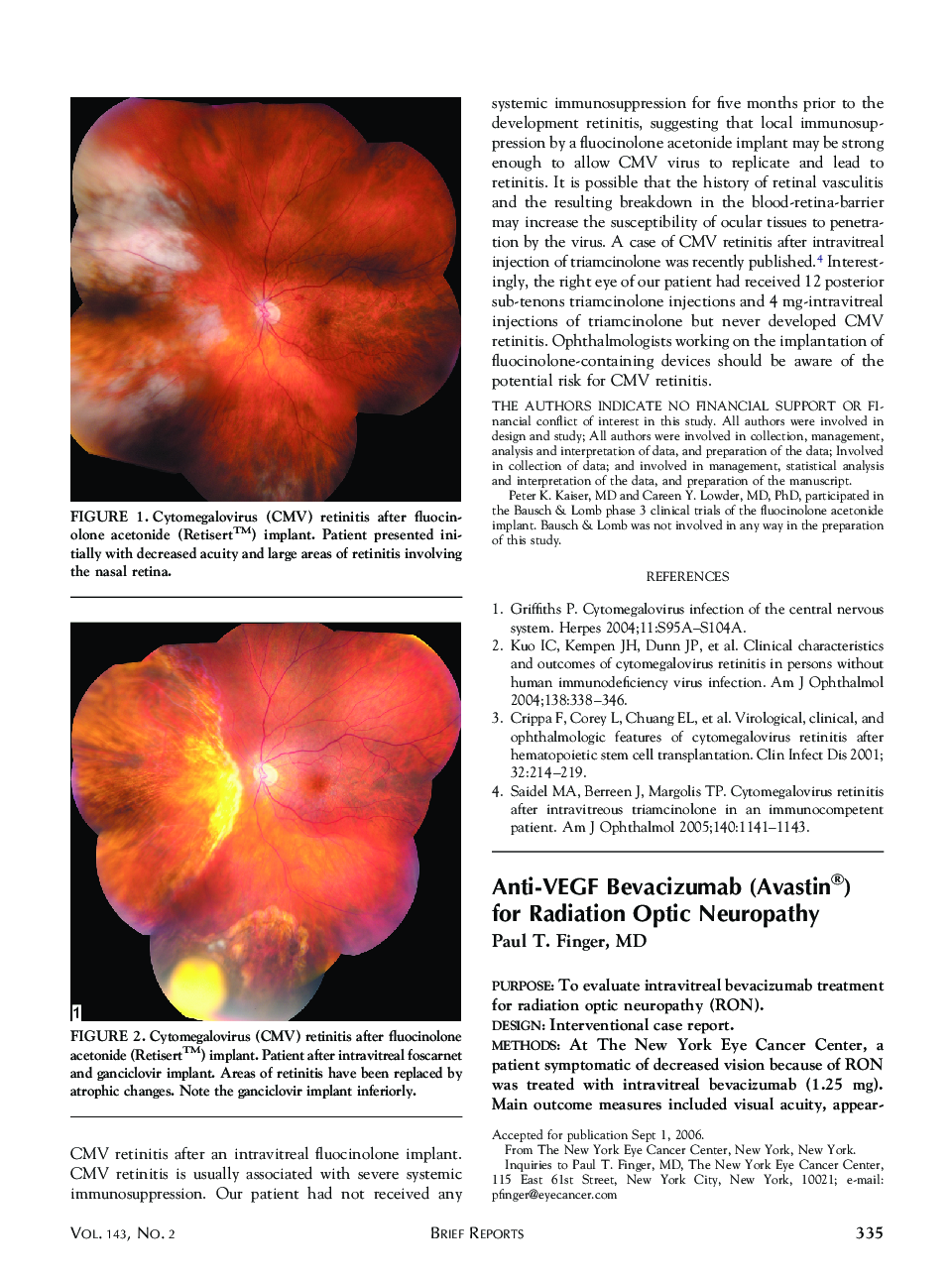| کد مقاله | کد نشریه | سال انتشار | مقاله انگلیسی | نسخه تمام متن |
|---|---|---|---|---|
| 4005208 | 1602224 | 2007 | 4 صفحه PDF | دانلود رایگان |

PurposeTo evaluate intravitreal bevacizumab treatment for radiation optic neuropathy (RON).DesignInterventional case report.MethodsAt The New York Eye Cancer Center, a patient symptomatic of decreased vision because of RON was treated with intravitreal bevacizumab (1.25 mg). Main outcome measures included visual acuity, appearance of the optic nerve, fundus photography, angiography, and optical coherence tomography/scanning laser ophthalmoscopy (OCT/SLO).ResultsWithin one week, her vision improved from 20/32 to 20/20 with a reduction in optic disk hemorrhage. At six weeks, evidence of both decreased hemorrhage and optic disk edema was documented by photography, angiography, and OCT/SLO. At the three and five-month follow-up visits, the hemorrhages resolved, and her disk margins were sharp. There were no ocular or systemic side effects.ConclusionsIntravitreal bevacizumab was tolerated, improved vision, and reduced hemorrhage as well as optic disk edema (angiographic leakage). Anti-VEGF therapy (e.g. bevacizumab) should be investigated for both ocular and nonocular radiation neuropathy.
Journal: American Journal of Ophthalmology - Volume 143, Issue 2, February 2007, Pages 335–338